For this critical play, I played Criminal Case: The Conspiracy by “Pretty Simple” on iOS. The game involves joining the Police of Grimsborough to solve a series of murder mysteries through hidden objects and adventure puzzles. As a player, I had to investigate the crime scenes for clues, bring the suspects into questioning and analyze the evidence to arrest the correct person. The puzzles are very simple and so the target audience is anyone above 10 years old (the game doesn’t include much gore which makes it safe to pay for younger audiences). I think it is a good game for people who want to pass some time and solve some puzzles while acting like a detective. The game is single-player and involves just the player and the game (no competition).
The narrative of the game is told through a character on the screen and I simply have to tap on the screen to go through the text. The mechanics of the game involve exploring different scenes, finding clues by clicking on them, and then comparing these clues to suspects’ profiles to determine who is guilty. Overall the game has very simple and hardcoded mechanics which I will explore in the “improvements section. The main types of fun for this game are Narrative, as it tries to tell the story of different murder mysteries (which in my opinion is not successfully done, see “improvements” section) and Challenge, as players must solve small puzzles to advance in the story.
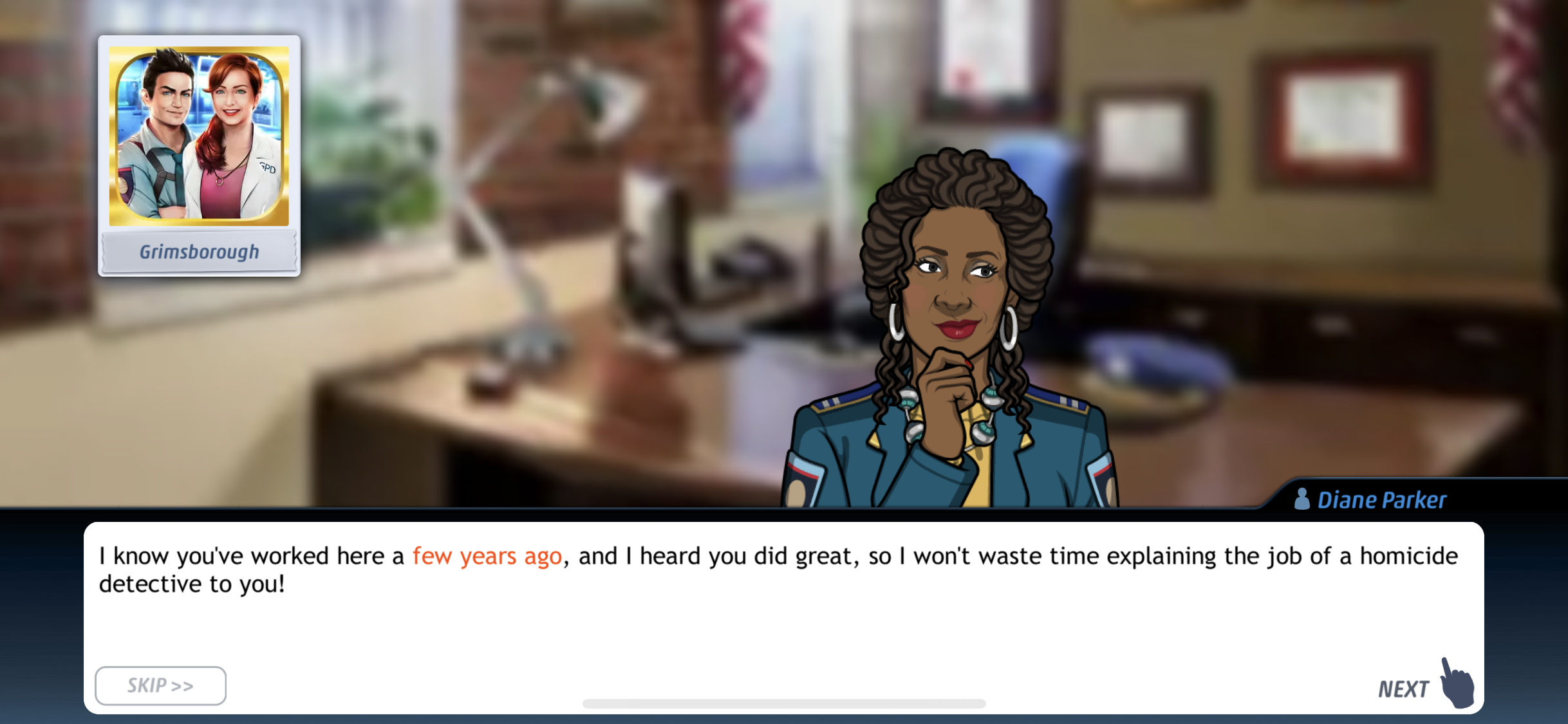 Tapping through the screen to explore narrative
Tapping through the screen to explore narrative
Improvements:
In general, the game felt too guided and there was little for me to explore. It felt like the game was hardcoded and wasn’t really about a mystery (as advertised)
I also thought the mechanics didn’t really fit the theme of the mystery narrative. For example, at some points the game made me find random elements not related to the crime (example: rainbow and dog). This made it seem as if the game lacked embedded narrative, and was trying to make up for it with filler puzzles.
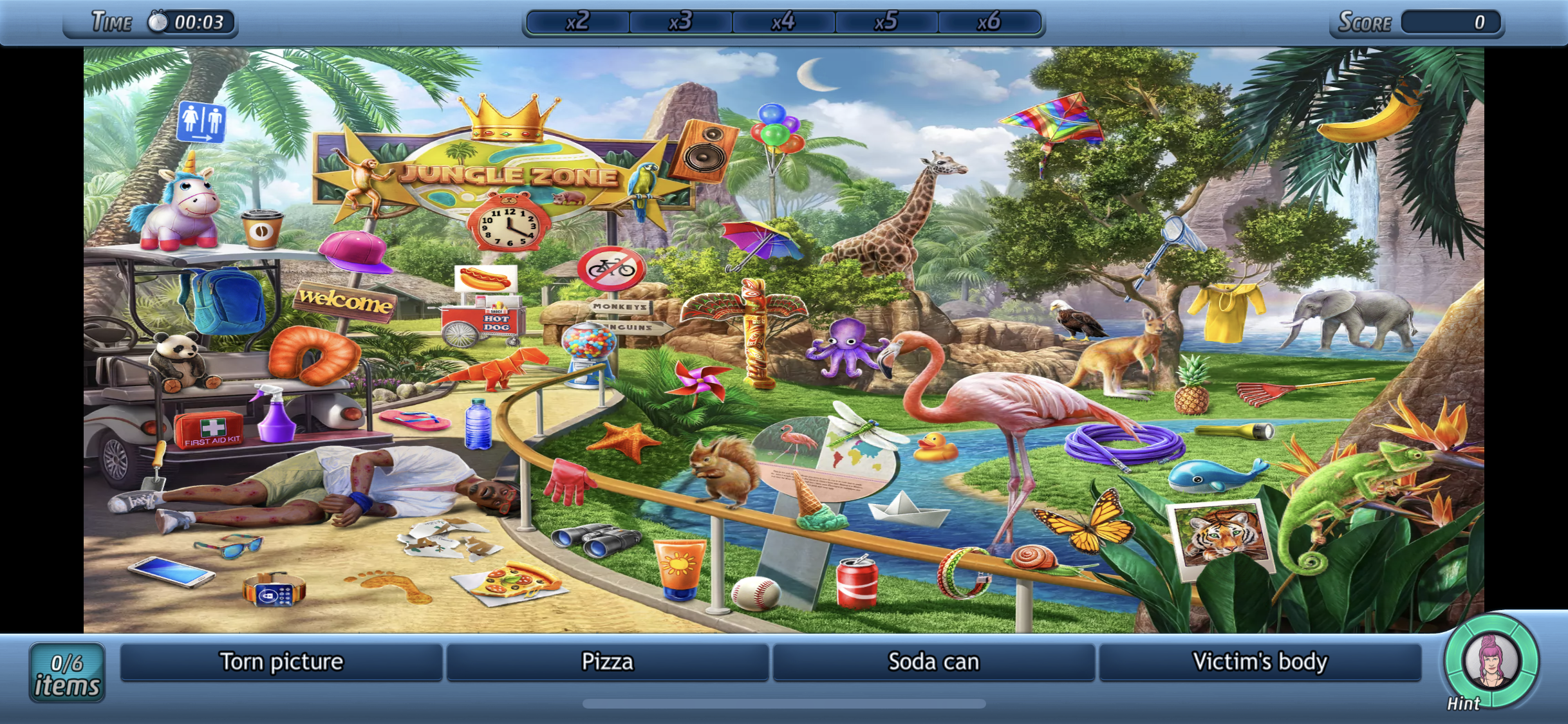
Finding unrelated elements such as “Pizza”
I appreciated that there were several types of puzzles, which made the game feel a little less repetitive. However, the puzzles felt too easy (finding an object in plain sight, or piecing together a shirt), which again distracted from the narrative. For example in one part of the game, I had to arrest the killer that matched the evidence at the crime scene. The game literally highlighted all the elements that matched and displayed on the screen that one of the characters was a perfect match. In my opinion, this takes away from the mystery of the game as I felt as if I was not doing anything. One of the clues was that the killer was right-handed, and this is given in the suspect profiles. An improvement might be to have a separate minigame where we interview the suspects or follow a day in their life, and learn about their habits, instead of the game simplify giving it to us this easily (same with for example their job which was another clue that was simply given). I then realized that this was the tutorial section and hoped the actual game would have a bit more flexibility. However, I was surprised to find out that all these negative aspects were still present.
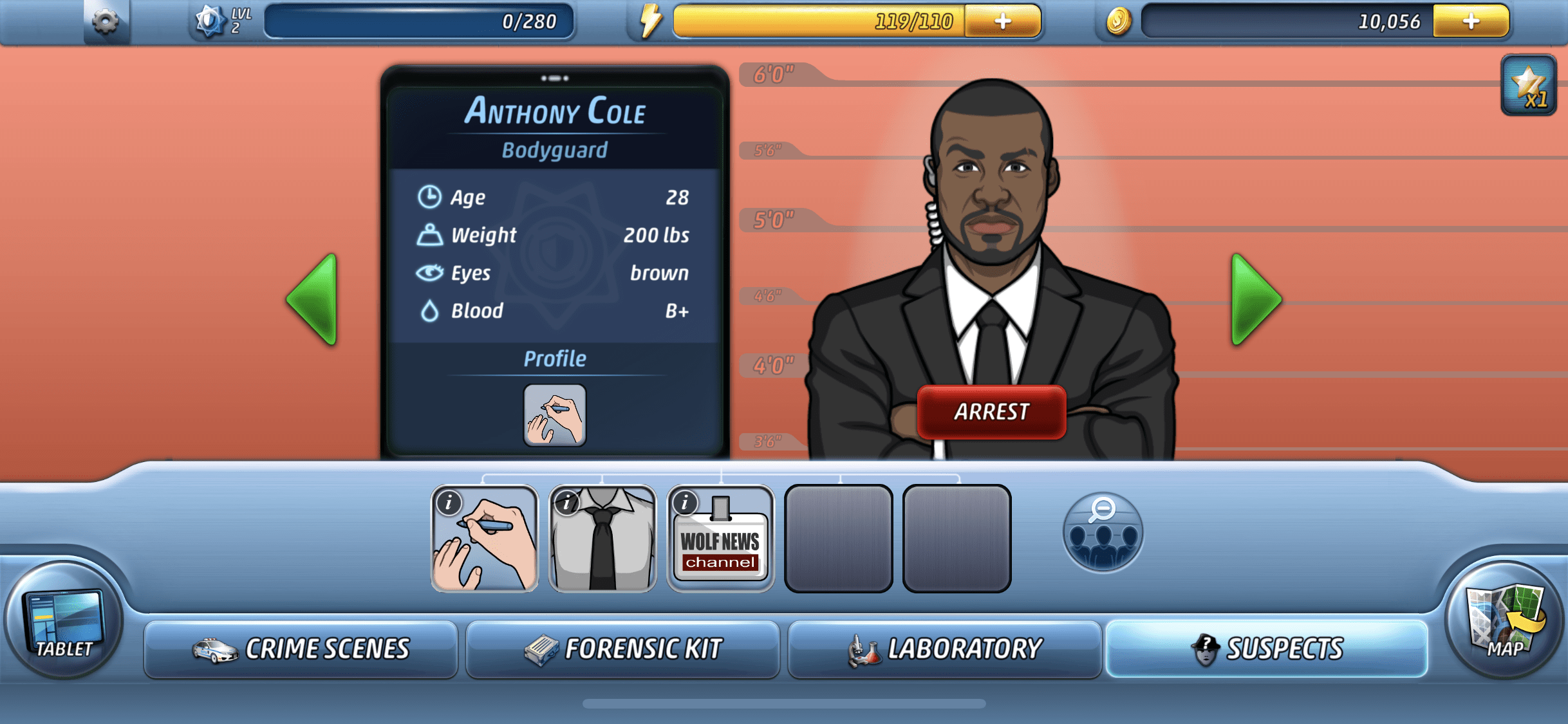
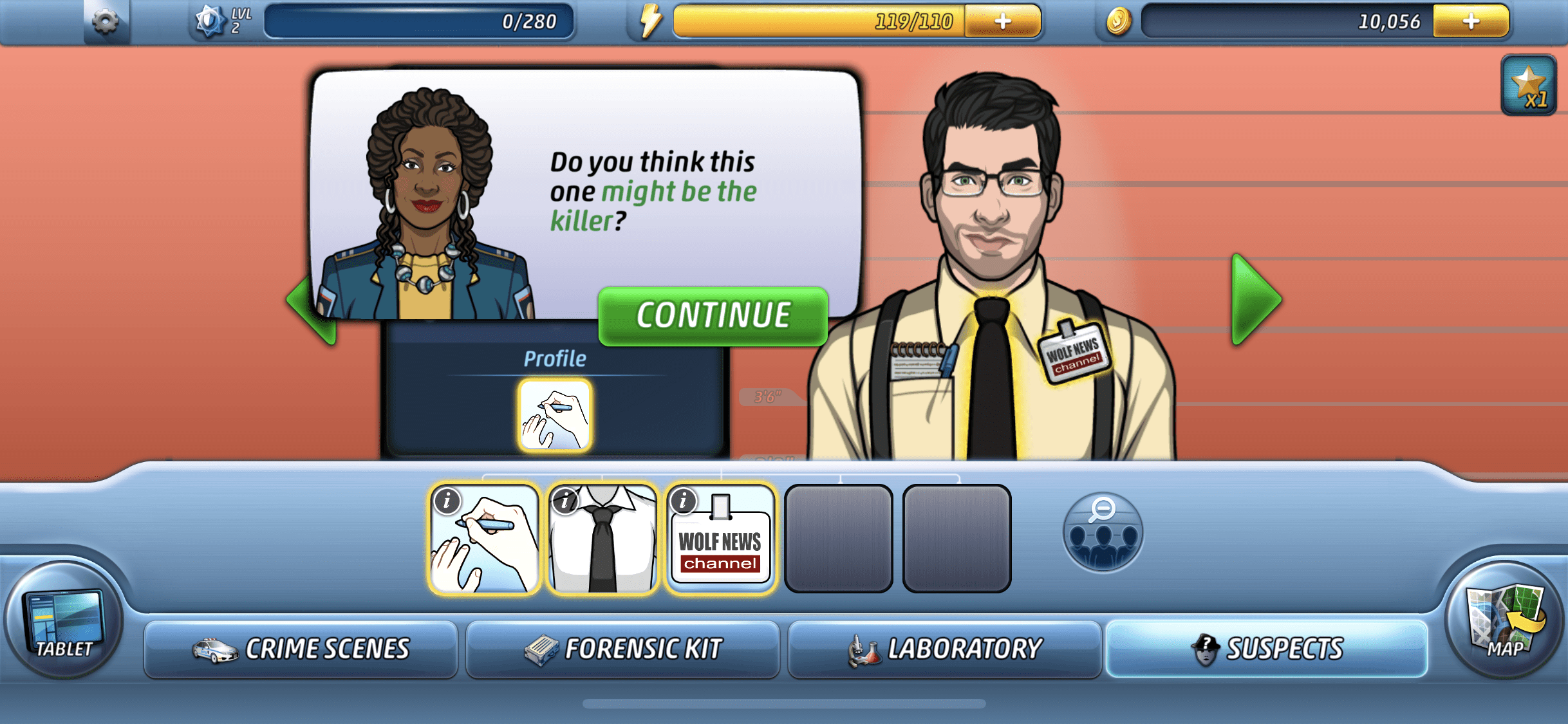
Game highlighting all matching elements and making it too easy to identify the murderer
Also, this might be because it was a free game, but it relied on ads and having to wait “x” amount of time before actions can be performed which really took away from the mystery narrative. As a player, if I am engaged and fully into the story, having to wait for a few minutes spoils it and kills the suspense and momentum. This made me realize that for narrative mystery games it is important to have the players’ attention at all times and not interrupt their experience (however I recognize that this might be needed in this case because the game is free)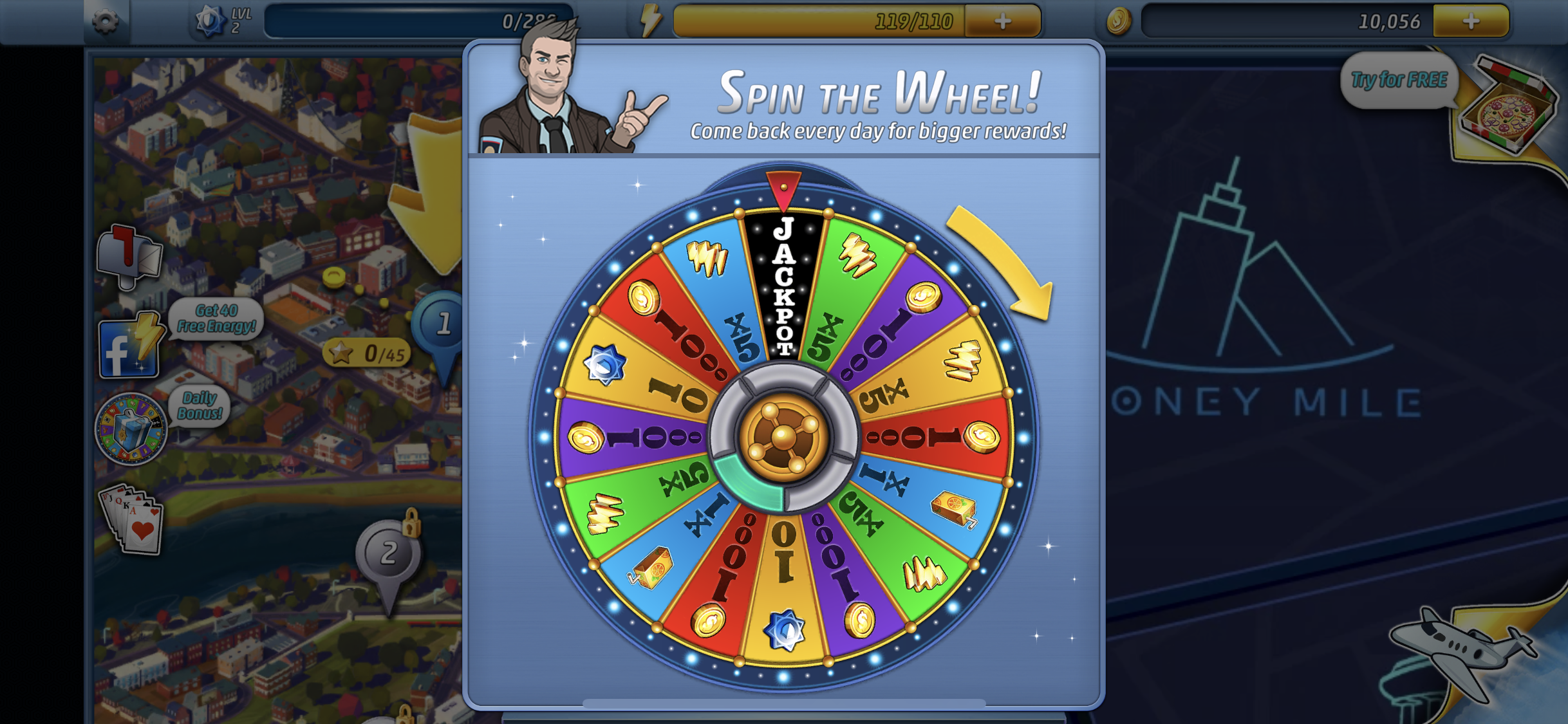
“Spin the wheel” for XP points distracts from the narrative and mystery



